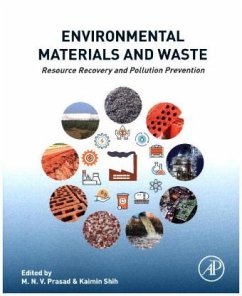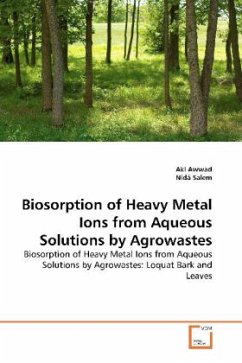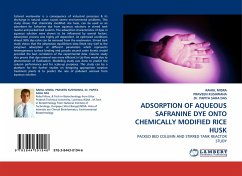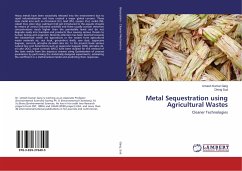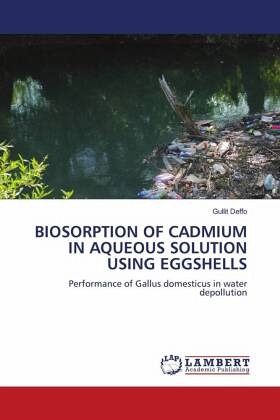
BIOSORPTION OF CADMIUM IN AQUEOUS SOLUTION USING EGGSHELLS
Performance of Gallus domesticus in water depollution
Versandkostenfrei!
Versandfertig in 6-10 Tagen
29,99 €
inkl. MwSt.

PAYBACK Punkte
15 °P sammeln!
Biosorption of cadmium (II) ions from aqueous solutions onto eggshells (Gallus domesticus) powder was investigated. IR spectroscopy and point of zero charge was used to characterize the biosorbent in order to identify the functional groups and the charge of material respectively. Batch experiments were used to better understand the biosorption mechanism, and also to examine the effects of some important parameters such as biosorbent dosage, contact time, initial concentration of the pollutant, pH of solution that influence the biosorption. The maximum percentage of Cadmium (II) ions (99.5%) re...
Biosorption of cadmium (II) ions from aqueous solutions onto eggshells (Gallus domesticus) powder was investigated. IR spectroscopy and point of zero charge was used to characterize the biosorbent in order to identify the functional groups and the charge of material respectively. Batch experiments were used to better understand the biosorption mechanism, and also to examine the effects of some important parameters such as biosorbent dosage, contact time, initial concentration of the pollutant, pH of solution that influence the biosorption. The maximum percentage of Cadmium (II) ions (99.5%) removal was obtained at 100 mg of the treated biosorbent, contact time of 30 min and pH of 4.5. The experimental data fitted best with the Langmuir model where R2 = 0.994. The results of the kinetics study indicate that the pseudo-second order model is the one which has the best coefficient of determination (R2 = 0.999) and intra particular diffusion studies showed three linear portions (R12 =1 and R22 = 0.989 and R32 = 0.707). From these results, we can recommend that eggshells can be used as an effective low-cost biosorbent to remove cadmium (II) ions from the wastewater.







